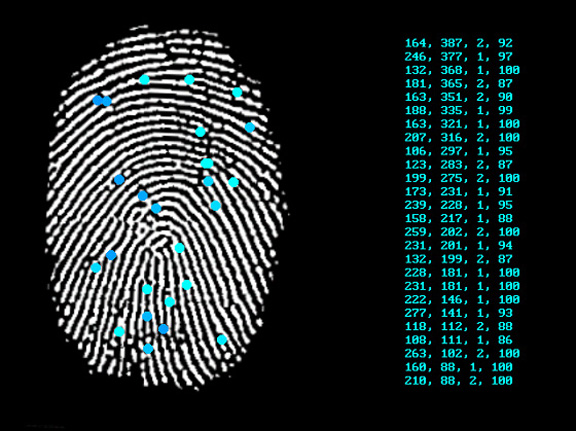Open Biometrics, 2001-2002
challenge classification
The Open Biometrics Initiative challenges hard and fast classification of biometric data. Numerous government and private agencies are working towards large-scale biometric identification systems. Visitors to the United States are now routinely finger-scanned at border crossings. In the near future, no official government document will be issued without a fingerprint, eye or DNA scan. But are you really who they think you are?
The Open Biometrics Initiative challenges the fabrication of automated biometric identification. Biometric classification is a probability problem, and can only be correct to a certain degree. Consequently, this system does not interpret the results in a reductionist binary manner, but offers only a probabilistic result. In the finger print analysis application here, the system calculates and prints the characteristic points together with their coordinates, type code (ridge ending or bifurcation) and color-coded likelihood as a probabilistic IDcard.
The popularization of biometric analysis has made the procedure too easy, in the sense that the results are too easily construed to mean what they only imply. Applied on a large scale, this efficiency driven approach will guarantee errors that are difficult to assess because the internals of the system are not shared. Large scale public classification systems must be open, open to insight and scrutiny.


